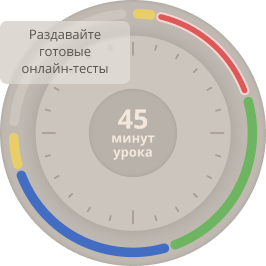

СДЕЛАЙТЕ СВОИ УРОКИ ЕЩЁ ЭФФЕКТИВНЕЕ, А ЖИЗНЬ СВОБОДНЕЕ
Благодаря готовым учебным материалам для работы в классе и дистанционно
Скидки до 50 % на комплекты
только до
Готовые ключевые этапы урока всегда будут у вас под рукой
Организационный момент
Проверка знаний
Объяснение материала
Закрепление изученного
Итоги урока

The difference between tell and say.
- With 'tell' we usually say who is told. You could say there is a personal object, so: 'Can you tell me what's happened?' We say, 'me'.
- We use 'tell' without a personal object in a few expressions, that are kind of fixed expressions like tell the truth, tell the time and tell the difference.
- We only use 'tell' to mean instruct or inform. 'I told him to wait for me on the platform'. that's an instruction. "My father used to tell me wonderful stories" - informing me.
- He told the news to everybody he saw
- ‘I’m ready to go now,’ he told her.
- With 'say' we don't usually say who is told. So you might say 'please say each word clearly and distinctly'. And if we do say who is told, we use the word 'to', so: 'He said goodbye to me as if we would never see one another again'.
- 'Say' can be used for any kind of talking. So here are three sentences where you could not use 'tell':
- And we use 'say' before words like a word, a name, or a sentence. An example would be: 'Don't say a word.'
- Не says he wants to come with us.
- Did he say that?
- She said 'Where have you been?'
- So I said what a good idea.
- Maureen said 'What's the matter?'


Категория:
Английский язык
04.03.2018 09:21






